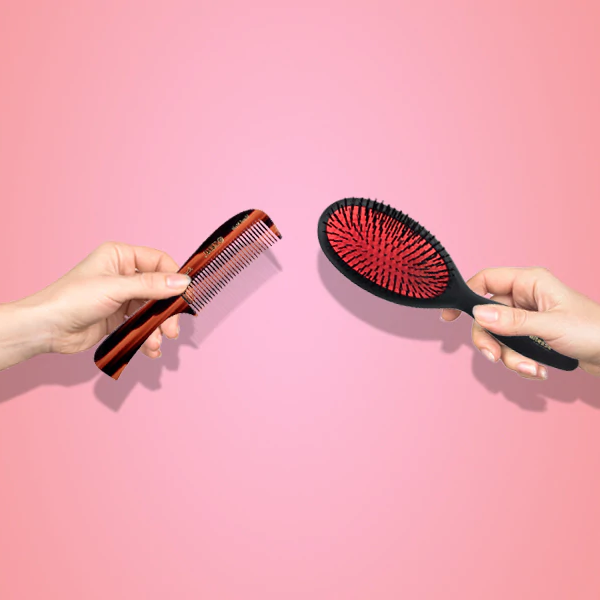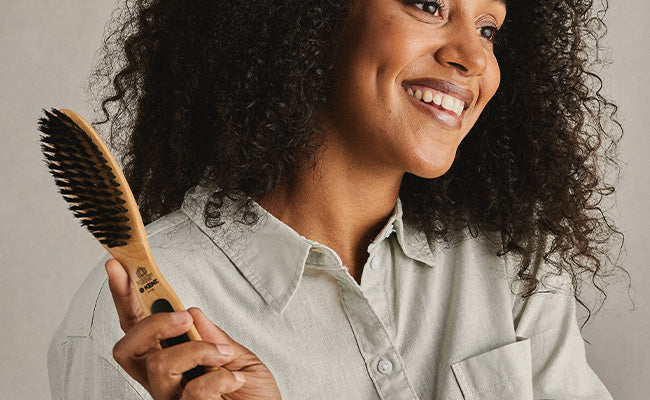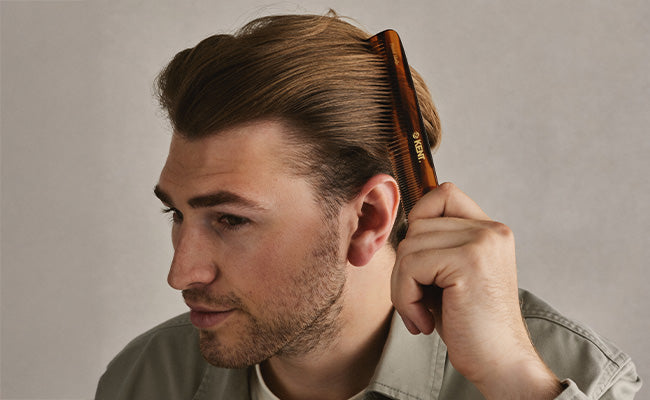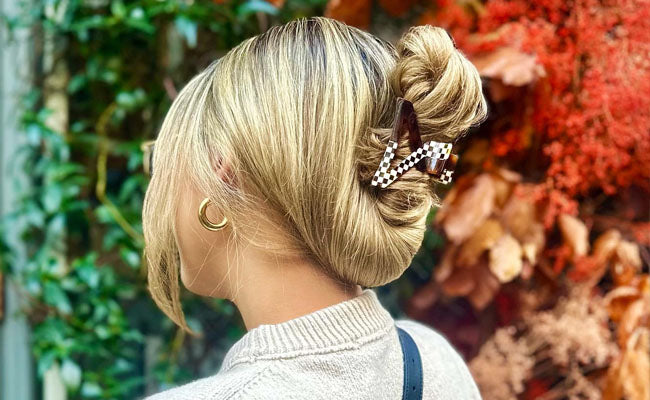
Combs vs Brush
Which is Better for Hair?
It’s well documented that both brushing and combing can be beneficial for your hair, but to know what works best for you will depend on your type of hair, your tools, and your grooming habits.
Combs and brushes were invented to help people clean and style their hair. The comb came first, but both combs and brushes have an interesting history as symbols of wealth in countries like China and Egypt. Today, owning a brush or a comb symbolizes an active interest in your own hygiene.
Combs nowadays come in a diversity of colors, lengths, and materials, but overall they have the same functions as they had in the past. Brushes, on the other hand, have multiple functions, and there are now brushes for all types of uses.
-
Round brushes with stiff, thick bristles are best for short hair
-
Oval brushes with nylon and boar bristles are best for medium to long hair
-
Paddle brushes are best for detangling wavy hair
-
Round brushes with stiff bristles spaced farther apart are best for thin and straight hair
Hand-held detanglers are best for thick and curly wet hair
We recommend you check out our hairbrushes that are designed for your hair type and see how well they work for you.
How To Use a Comb Properly?

If your hair gets particularly knotty, carefully run your fingers through your tresses before you pick up a comb, as this will gently ease out knots without tugging at your hair.
Always comb your hair through the ends before taking your comb through the root. For bleached or dyed hair, pick a wider comb as the hair will be more sensitive and will benefit from less stress. Slowly and consistently comb your hair with patience. If you are struggling to detangle your hair take your time rather than forcing your comb through your hair. Stay away from molded plastic combs as they can usually create static and may damage hair. A wide-toothed, saw-cut, acetate comb will gently pull apart knots and tangles your hair without damaging hair.
How To Use a Brush Properly

For longer hair, we recommend starting a few inches off the bottom and working on small sections and short strokes to remove tangles. This method will prevent hair damage, breakage, and damage to your scalp. Remember, don’t brush your hair more than necessary because it can lead to hair damage. Overbrushing will lift your hair cuticles, damaging them and making your hair dry and without shine. We strongly advise you only brush your hair when it needs to be detangled or made neat.
The beard is not just for the lumberjack or the woodsman anymore, it’s for everybody. Men are growing their beards, cultivating them, and bringing them to environments both urban and rural. Surveys demonstrate that full-bearded men appear more mature, more powerful, more respected, and of higher status than non-bearded men. Although, beards need to be groomed and well-cared-for to enjoy these benefits.
Hair brushes can also collect dirt, bacteria, and dead skin cells very quickly. It is important to clean your hair brushes frequently. The most effective method is to use hand-wash soap and a quick wash under running water without using any kind of cleaner. This should be done at least one time a month to keep harmful bacteria away.
Continue reading:
Take Care of Your Beard









Leave a comment
This site is protected by hCaptcha and the hCaptcha Privacy Policy and Terms of Service apply.